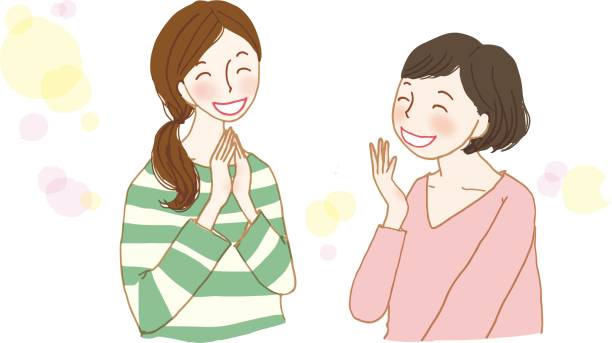Humor in Communication Blog- Monica Cuevas
Wednesday, April 17, 2024
Humor within organizations
Wednesday, April 10, 2024
The impacts that teasing has on relationships
Wednesday, April 3, 2024
The use of humor in conflict
Wednesday, March 27, 2024
The time I used humor to reduce uncertainty
Saturday, March 23, 2024
The meaning of the Relief Theory
Tuesday, March 12, 2024
My moment with the Benign Violation Theory
Wednesday, March 6, 2024
A discussion of the Clarification Function of Humor
Tuesday, March 5, 2024
The Arousal Theory showcased in Bizaardvark
Humor in people's lives is often caused by a wide variety of things. It may be caused by listening to a joke, by seeing something funny, and by doing something that one thinks is funny. Humor, however, can also be caused when people feel pleasure. This specific cause of humor goes along with one of the theories of humor known as The Arousal Theory. This is a theory that people can see occurring when someone expresses feelings of pleasure by letting out their laughter. One common feeling of pleasure that often causes people to laugh is being tickled. There are of course some people who are not ticklish, so the feelings of pleasure that can cause people to laugh vary from person to person. The main point of this theory, however, is that some sort of pleasurable feeling immediately leads people to find humor by laughing.
A clip that captures the essence of The Arousal Theory is the one I included below from "Bizaardvark." The clip shows two characters known as Frankie and Paige who are fighting each other during an MMA class. At the start of the clip Frankie complains about Paige's approach to fighting while also questioning how it is possible for her to be so good at this sport. Paige when hearing this question says that one of the reasons, she is so good is that she understands what her opponents' weaknesses are. Her response soon causes Frankie to say that she also knows what weaknesses her opponents have, which further prompts Frankie to attack her with tickles. As this tickle attack occurs both Frankie and Paige show how they find humor through the use of The Arousal Theory. Paige herself finds humor by laughing at the feeling of tickles since that feeling seems to cause her pleasure right before she pushes Frankie away. Frankie, however, also seems to find humor through this theory by laughing a bit since it seems like tickling Paige is something that causes her pleasure. Finally, after they both use this theory Paige seems to be mad at Frankie for the tickles, but she regardless shows how a pleasurable feeling like tickles can result in laughter through The Arousal Theory.
In sum, the clip shows that The Arousal Theory involves a pleasurable feeling that causes people to laugh. While also showing how the theory itself can occur among people. However, one thing to note is that the clip only shows two of the various pleasurable feelings that can cause people to laugh, which in this case includes being tickled and tickling someone.
Friday, March 1, 2024
Wednesday, February 28, 2024
How I was persuaded with humor
Monday, February 19, 2024
The Enforcement Function of Humor through the movie of To All the Boys I've Loved Before
Wednesday, February 14, 2024
Understanding the Model of Individual Humor
There are times when people laugh at jokes or at something they saw but as this happens there might also be other people around who do not find the humor in those jokes or in what they saw. To understand why this occurs I will be teaching a model. More specifically the Model of Individual Humor (Meyer, 2015). For this I will first explain what individual humor is. Then I will discuss the model of individual humor and in the end, I will provide an example of how people can interpret humor through this model.
To begin individual humor is about how each person individually sees humor. When humorous situations occur, people use affective and cognitive information to judge those situations (Meyer, 2015). This means that they use their feelings and the information they are familiar with to make a judgement that allows them to determine something as humorous or not. In addition to this Meyer (2015) mentions that humor can be explored by looking at what takes place in individuals minds when making the choice of what they will or will not find funny. Which simply means that people's minds have different perceptions that allow them to experience humor differently.
The model of individual humor itself involves several things. Meyer (2015) mentions that there is first an event, a phrase, or a broken life pattern which people can either see as funny or not. Then there is the intentionality of volition for which he mentions that people's ego involvement is what allows them to find humor or not. Meyer specifically mentions that people's ego involvement is based on who the source of the message is, what mood an individual is in, and the confidence that the individual has about the issue that occurred. For this he mentions that when people have a high ego involvement, they take the tragic mode but that if they have a low ego involvement then they take the comic mode. Meyer mentions that the tragic mode is when people do not find things funny because they are more concerned about the consequences of their actions and because they take things more seriously. However, he lastly mentions that the comic mode is when people take a playful approach through which they get pleasure from a pattern violation that lets them laugh.
An example of the model of individual humor is that I rarely clean around the house. When I do my parents point it out by making jokes and laughing. So, the event for them is that I grab a cleaning tool and the pattern violation is that they are not used to seeing me clean. When this happens, my parents have a low ego involvement because I am the source of the event. As for the mood, they are happy to see me clean. Then for the confidence they are confident that I will be cleaning which lastly leads them to take the comic path.
References
Meyer, J. C. (2015). Understanding Humor Through Communication: Why Be Funny, Anyway?. Lexington Books.
Thursday, February 8, 2024
Looking at the Identification Function of Humor in my personal life
Wednesday, February 7, 2024
An Explanation of the Differentiation Function of Humor
It is likely that we have all been laughed at for a number of reasons or that we have even laughed at others. In spite of this many of us fail to realize that this falls under a specific function of humor. To be more precise it falls under the Differentiation function of humor which is exactly what I will be teaching throughout this blog post. To do so I will first explain what this function means. Then I will discuss what it can do to people's relationships, and I will lastly provide some examples of where it can be seen.
So, what does the differentiation function of humor mean? Well, this function means that humor is used to contrast groups of people from others but also to contrast people in one-to-one interactions (Meyer, 2015). In simpler words this means that when people are out interacting with others, and they see something that they believe is different from what it should be they feel the need to call it out through the use of humor. By doing this they then create situations in which one or multiple people are laughing at the called-out difference while the person or people being laughed at are left feeling as if they are the odd ones out.
From this we can now discuss what the differentiation function of humor does to people's relationships. According to Meyer (2015) this function of humor is considered to be the most divisive one there is. This simply means that it can greatly damage the relationships between people by creating a separation between them. As Meyer (2015) mentions it creates this perspective that those who laugh can in a way be considered winners while the ones being laughed at can be perceived as the losers. Which further highlights how it can break people apart.
Finally, this function can be seen in various ways and places. One of these places includes high schools where students typically cluster together into the groups they identify with and then they make fun of the students outside of their very own group. By using this function, they highlight that there are differences between their groups and in doing so their relationships with other groups of students become quite divisive. Aside from high schools this function is also likely to be seen between siblings and couples who make fun of each other. From this it can lastly be seen that the differentiation function of humor is very common and that it can be spotted all around us.
References
Meyer, J. C. (2015). Understanding Humor Through Communication: Why Be Funny, Anyway?. Lexington Books.
Thursday, February 1, 2024
The Superiority Theory in The Summer I Turned Pretty
A type of humor I am sure many have come across is the one people use to establish a sense of status. This type of humor is associated with the Superiority Theory. A theory through which humor can be seen or used in situations or interactions where people feel the need to joke or laugh because they feel like they are better than others. However, it can also be seen when people win or achieve something that others do not.
In the clip below of "The Summer I Turned Pretty" the characters Belly and Conrad are playing a competitive game of basketball. As they play, they make use of the Superiority Theory of humor by making short comments to each other suggesting that they think they are better than the other. In addition to this Belly makes exaggerated and joyful facial expressions after she makes her shots. While Conrad does movements like looking away from the net to make a shot and then giggling when he makes it. Then when Conrad misses his shot, and the others are cheering Belly on Conrad jokingly uses the Superiority Theory to try to discourage her from making the final shot in a way that implies that she is not good enough to make it. However, Belly again uses this theory when she wins the game because she starts jumping around and laughing while she looks at Conrad. The clip lastly shows the use of this theory when one of the other characters makes a joke towards Conrad for losing as a way to suggest that he is not as good of a player as Belly is.
In looking at the whole interaction of the scene it can ultimately be seen that the Superiority Theory can positively be used to have fun with others. However, it is also important to know that this may not always be the case since some people may not find any humor in feeling like they are less.
Wednesday, January 31, 2024
My experience with the Psychoanalytic Theory
When it comes to humor there are several theories that can be used to explain why we laugh or why we find something funny. One of them is the Psychoanalytic Theory. This theory can be observed when people are put into situations where they turn their bottled-up emotions into humor. The emotions themselves can range from feeling fear, being nervous, or being uncomfortable. When people feel these emotions, it often gets to a point where they have no clue what to do with them other than to let them out through the use of humor.
Throughout my life I have noticed that I frequently use this theory. The most recent time I used it was when it was my uncle's wife's birthday party. I have often seen her side of the family, yet it is often strange to spend time together since they can be considered loud and outgoing while my side of the family is more serious. When arriving at the birthday party my parents and I stepped inside the house and all that could be heard was screaming and laughing from my cousins as well as the kids who belong to my uncle's wife's side of the family. For the most part we are all around the same age, but I usually keep to myself and don't interact with them. So, on this day I took a seat beside my mother while the other kids continued laughing and screaming. The reason for all the noise was that they were trying to film a TikTok. Now, considering that they were recording right behind my chair, I started to feel nervous and uncomfortable. I feared that if I moved, I would come out in their video. The emotions themselves were already strong inside of me but they eventually came out with the Psychoanalytic Theory when one of the girls' moms approached me. She had noticed that I was just sitting there with the older adults and asked if I wanted to be in the video with the others. I said no considering that I am not used to recording TikTok's. She then asked "why, are you embarrassed?" and at this point I felt so uncomfortable that I did not know what to say to her, so I simply looked at her and laughed. After seeing me laugh she also laughed and eventually walked away. While I did feel that the moment was very awkward, I also think that laughing allowed me to relax a bit.
Overall, the Psychoanalytic Theory in my personal example goes to show that we can turn feelings that make us feel bad into humor as a way to minimize them and ultimately help us feel better.
Wednesday, January 24, 2024
Humor within organizations
Imagining how humor plays out in organizations can be tough for most people since they mostly expect organizations to be professional an...

-
Distressful feelings are inevitable. However, they do not always prevent humor since letting them go can sometimes actually lead to humo...
-
The existence of social norms is a very important aspect of why people experience humor. Throughout the world people are often intention...
-
It is a common thing for people to say that they share a joke or a humorous experience with certain people. These jokes and experiences ...













